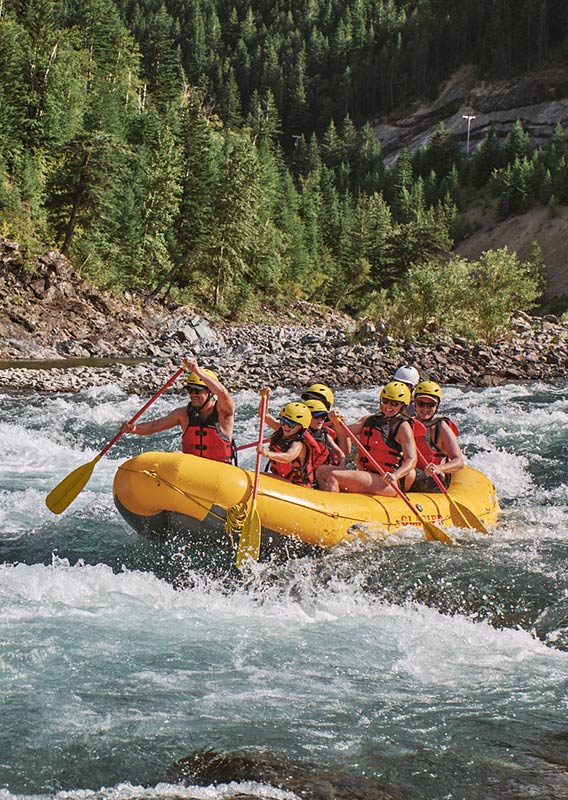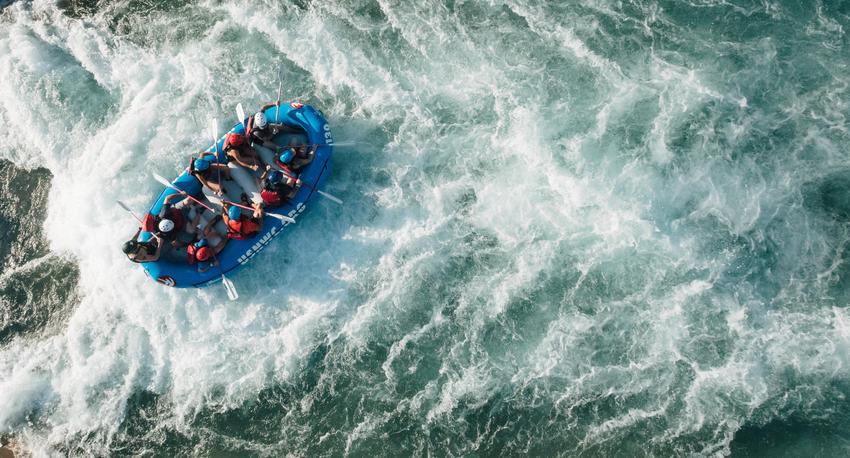The Ultimate Experience: Water Rafting Tips and Tricks
Getting started on a water rafting adventure is a thrilling experience that requires a blend of skill, prep work, and regard for nature's powerful pressures. As the rush of the river pushes you forward, navigating through spins and transforms, the art of water rafting unveils itself as a test of both physical expertise and psychological skill.
Necessary Gear for Water Rafting
To ensure safety and comfort throughout water rafting tours, it is vital to gear up oneself with the essential equipment tailored to this adventurous activity. In addition, a strong helmet is necessary to safeguard versus head injuries, specifically in rough waters or if thrown off the plethora.
Moreover, correct shoes is crucial for maintaining great grasp and securing the feet from sharp rocks or unsafe surfaces. Neoprene booties or water shoes are advised for this function. It is likewise advisable to wear quick-drying clothing, such as a wetsuit or rash guard, to regulate body temperature and prevent hypothermia in cold water problems.
Lastly, a reliable paddle is essential for maneuvering through the water effectively. It should be light-weight yet durable to stand up to the roughness of rafting. By purchasing these necessary pieces of gear, rafters can enjoy their experience on the water with confidence and comfort.
Picking the Right Rafting Route
When intending a water rafting experience, selecting the appropriate rafting course is vital for a secure and pleasurable experience. Elements such as the level of problem, water problems, and the size of the route should all be thought about prior to getting started on your journey.
First and foremost, assess your group's skill level and experience. Various rafting routes are classified based upon trouble degrees ranging from Class I (easy) to Class VI (very hard and harmful) It is important to select a path that lines up with the capacities of all individuals to ensure every person's safety and pleasure.
In addition, take into consideration the water conditions of the route. Some paths might have tranquil waters appropriate for beginners, while others may have solid currents and tough rapids that need advanced skills. Investigating the water degrees and possible risks of the route ahead of time can assist you make an educated decision.
Last but not least, consider the length of the rafting course. Longer routes might require more time and stamina, so pick a route that fits within your team's timeframe and physical capacities. By very carefully selecting the best rafting course, you can set on your own up for a memorable and thrilling experience on the water.
Safety Preventative Measures on the Water
Thinking about the value of choosing the right rafting path for a enjoyable and safe experience, it is important to focus on safety and security precautions on the water to alleviate possible threats and guarantee a successful adventure. Prior to beginning on a water rafting journey, make certain all participants use correctly suitable personal flotation protection tools (PFDs) and helmets to safeguard against crashes. It is vital to listen diligently to the guide's security rundown, which typically covers paddling strategies, what to do in instance the plethora flips, and just how to assist others if required. Keeping interaction with the guide and fellow rafters is essential during the trip to collaborate motions and react without delay to any kind of guidelines or signals. In case of someone falling over the top, adhere to the overview's directions for swift and effective rescue procedures. Be mindful of the water conditions, such as rapids and barriers, and adjust your paddling techniques as necessary to browse securely via the course. By sticking to these security precautions, you can boost the overall experience and decrease potential hazards while water rafting.
Understanding Paddling Strategies
Establishing proficiency in paddling techniques is crucial for navigating through differing water conditions and ensuring a successful water rafting experience. White Water Rafting Colorado. Proper paddling not just helps in guiding the plethora efficiently but likewise adds to the overall sychronisation and teamwork needed for a secure and delightful journey
One of the essential paddling methods is the forward stroke. This stroke entails dipping the paddle blade totally into the water and pulling it back together with the boating, providing propulsion and guiding. The backward stroke, on the other hand, is critical for slowing down or reversing down the raft. By understanding the forward and in reverse strokes, rafters can additional hints efficiently manage the rate and instructions of the boating.

Tips for Handling Rapids Like a Pro
To excel in browsing tough river problems, proficient water rafters apply their understood paddling techniques with precision and finesse when managing rapids like seasoned experts. When facing rapids, it is important to keep a solid and worked with paddling rhythm. This rhythm helps the boating maintain its course and security amidst the rough waters. Additionally, it is vital to expect the activities of the boating and adapt promptly to altering problems. Experienced rafters utilize their understanding of river dynamics to proactively adjust their paddling method, guaranteeing effective steering through rapids.

Final Thought
To conclude, water rafting requires necessary gear, cautious route selection, safety precautions, understanding paddling techniques, and taking care of rapids with competence (White Water Rafting Colorado). By complying with these techniques and ideas, adventurers can make sure a enjoyable and successful rafting experience on the water. Keep in mind to always prioritize safety and security and be prepared for the challenges that featured browsing via rapids. With method and knowledge, anyone can become a skilled water rafter.

Thinking about the value of picking blog here the best rafting course for a delightful and risk-free experience, it is essential to prioritize security precautions on the water to minimize possible dangers and make certain a successful adventure. Inevitably, honing paddling techniques is vital to a successful and thrilling water rafting journey.
In conclusion, water rafting requires vital gear, careful path selection, security precautions, mastering paddling strategies, and dealing with rapids with expertise.